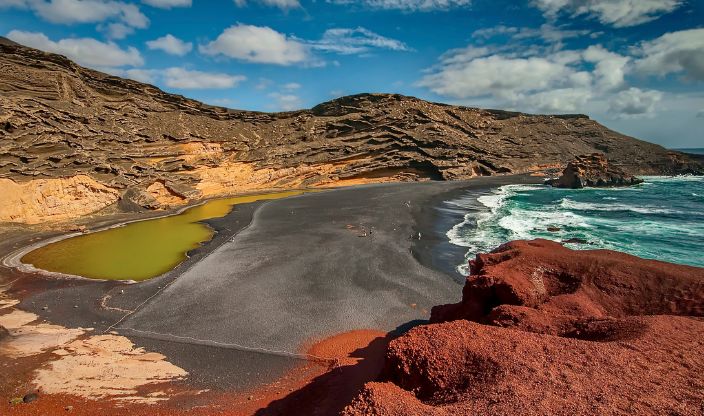Introducing Canary Islands
A holiday to the Canary Islands is like an adventure to the farthest flung corner of the Spanish territories but just a stone throw’s away from North Western Africa’s coastline; a real mix of cultures yet a cluster of islands offering seclusion, dreamy coastlines and a unique culture so you feel like it’s a whole destination of its own. Gran Canaria, Tenerife, Lanzarote, Fuerteventura, La Palma and La Gomera; islands far from the rest of Spain’s mainland and Balearics, they offer something a little bit different from the norm. For some, it’s the paradisiacal beaches and 5 star luxury resorts that really draw them into the Canaries dream; for others, it’s the dramatic volcanic landscapes and the promise of endless nature trails across the islands’ stunning national parks that really makes it; but for most, it’s simply not what they might expect from a Spanish destination. Full of surprising sights, intriguing topography and mind-blowing views at sunrise and sunset, the Canary Islands is a fantastic holiday alternative to islands in the heart of the Med.
Due to its proximity to the equator, the Canaries offers a fantastic winter destination as well as a busy summer destination. But if you want warm, balmy weather without all the tourist crowds, you have to visit between March and May or from September to November. From its famous black and white sandy beaches to its luxury golf and spa hotels, outstanding dive spots to awesome surf, and from the subtropical walking trails and volcanic landscapes of Timanfaya to the tumbling waterfalls of La Palma, there seems to be something for just about everyone. A gorgeous romantic destination and a perfect family island all the same; and with just as much forest as there is coastline, as many geysers as there are white sand beaches, and as much Spanish surrealist art as there are tapas bars, everyone is set to have an unforgettable time.
The Canaries makes a great family holiday destination because hot weather is almost always guaranteed and it’s the perfect place for out of season travel or out of school term holidays. Not only do the islands promise a pleasing climate pretty much all year round, but there’s so much diversity in the landscape, thus plenty to do both in and out of the water, either away from or close to the coast. Some of the best beaches to explore with kids include Puerto Rico Beach in Gran Canaria, Fanabe in Tenerife, La Guirra in Fuerteventura, Charco Verde in La Palma, and Las Cucharas Beach in Lanzarote.
Food on the Canary Islands is known as Canarian cuisine and is well known for its tasty tapas dishes, including the most famous dish of Tenerife, the Papas Arrugadas wrinkled potatoes. Other than the delicious tapas dishes available, the basis of Canarian cuisine is very much centred around fish, fresh vegetables and fresh fruit, with meat often being consumed in stews. Other typical dishes of the Canary Islands include slow cooked Caldereta (goat or lamb in sauce) and Sancocho Canario (salted fish served with Mojo Verde salsa). Must try desserts are Bienmesabe (a rum and honey cake) and Platanos Fritos (fried bananas).
It is believed that the first inhabitants of the islands were the Gaunches in 1000 BC before European explorers came to explore the islands in the 1st Century AD. In the 15th Century, the Castilians started to colonize and over the course of the century, the islands would suffer numerous pirate attacks. By the 18th Century, the economy began to boom and by the 20th Century, the Canaries were granted autonomous rule within Spain. Today, the dialect spoken on the islands is similar to that in Southern Spain but there are also language influences from South America as well as the Caribbean due to emigration back in the 18th and 19th Century.
Top Locations in Canary Islands








